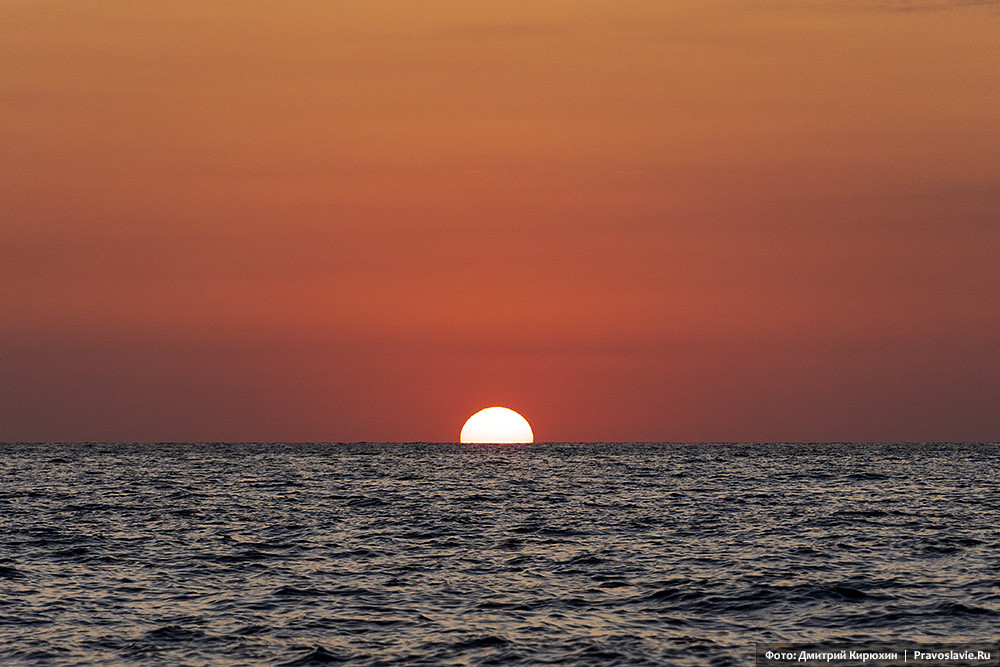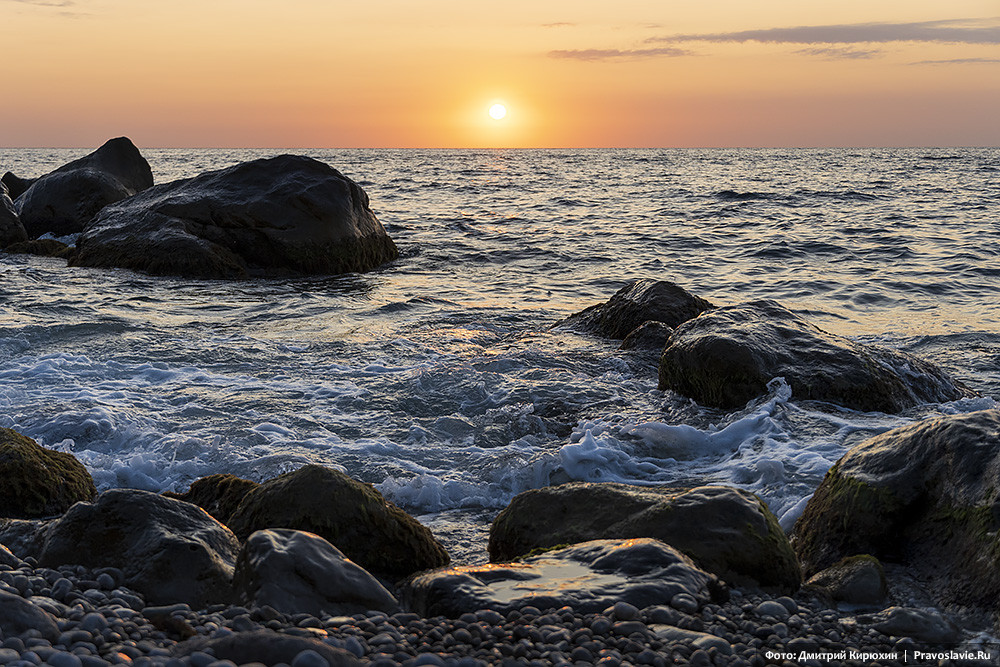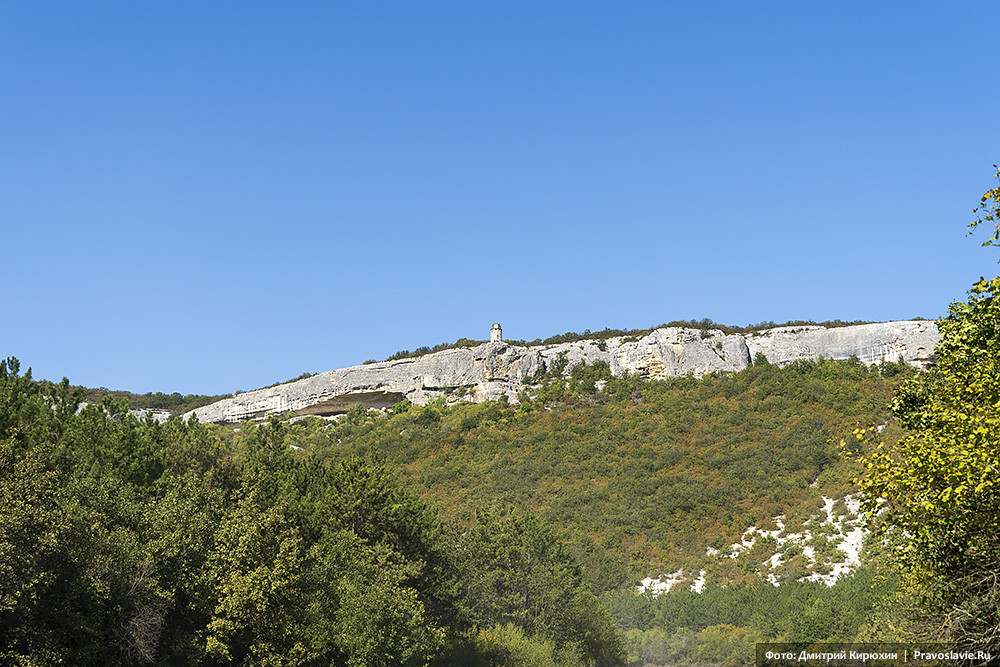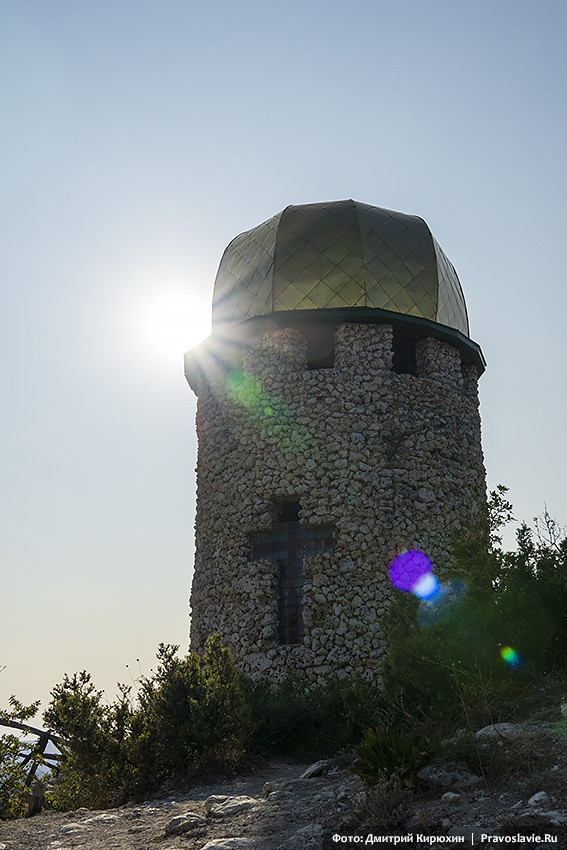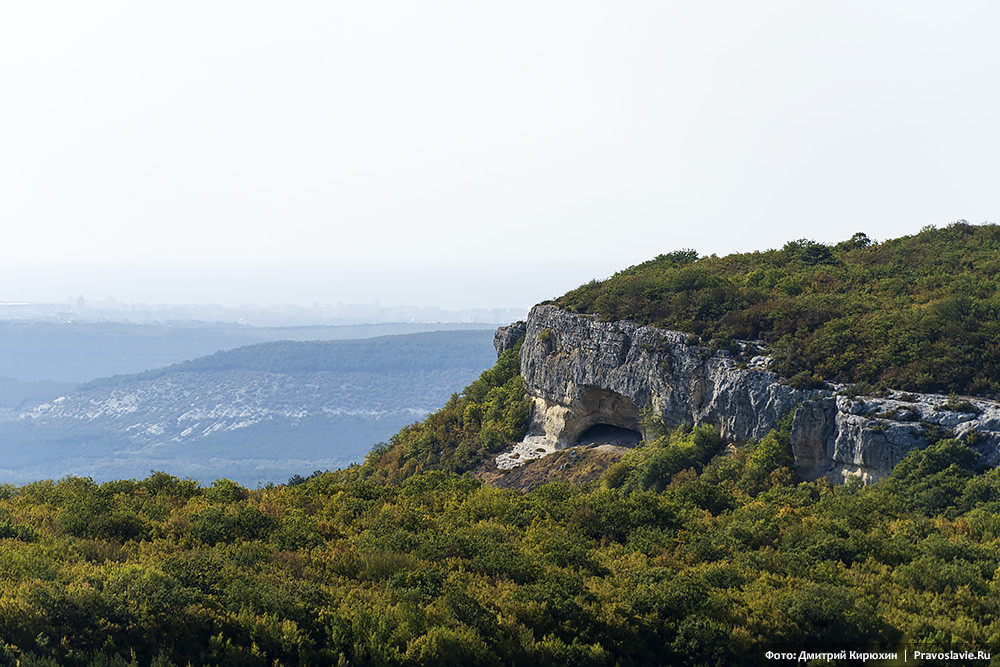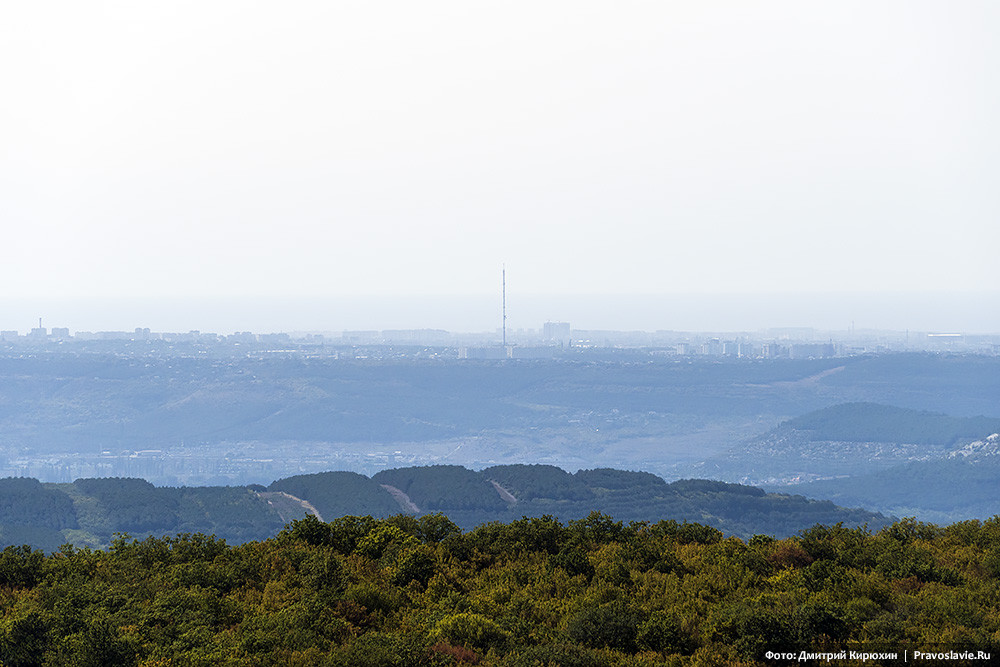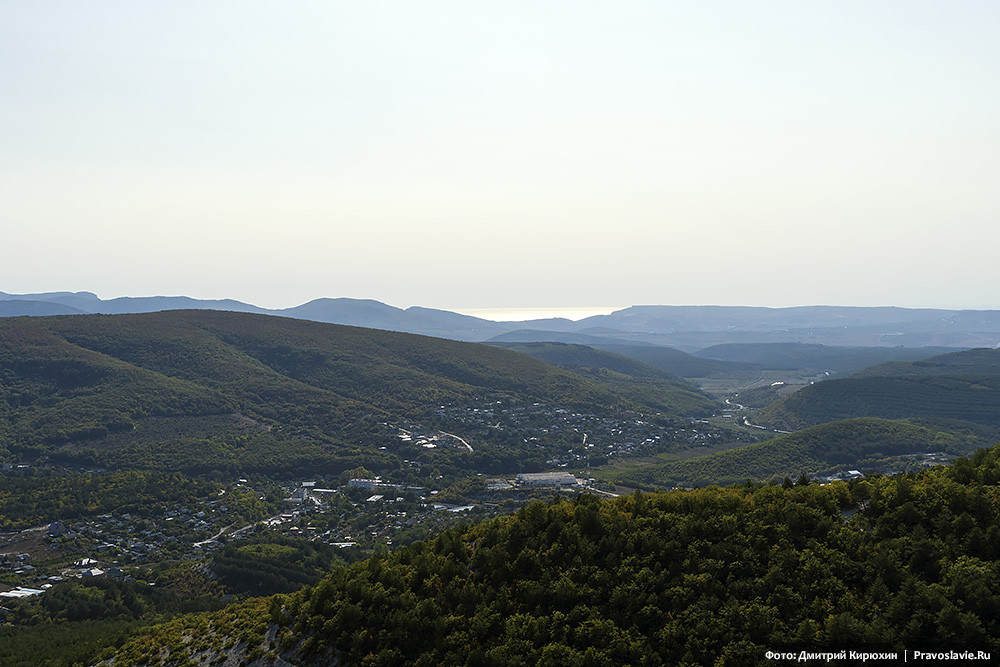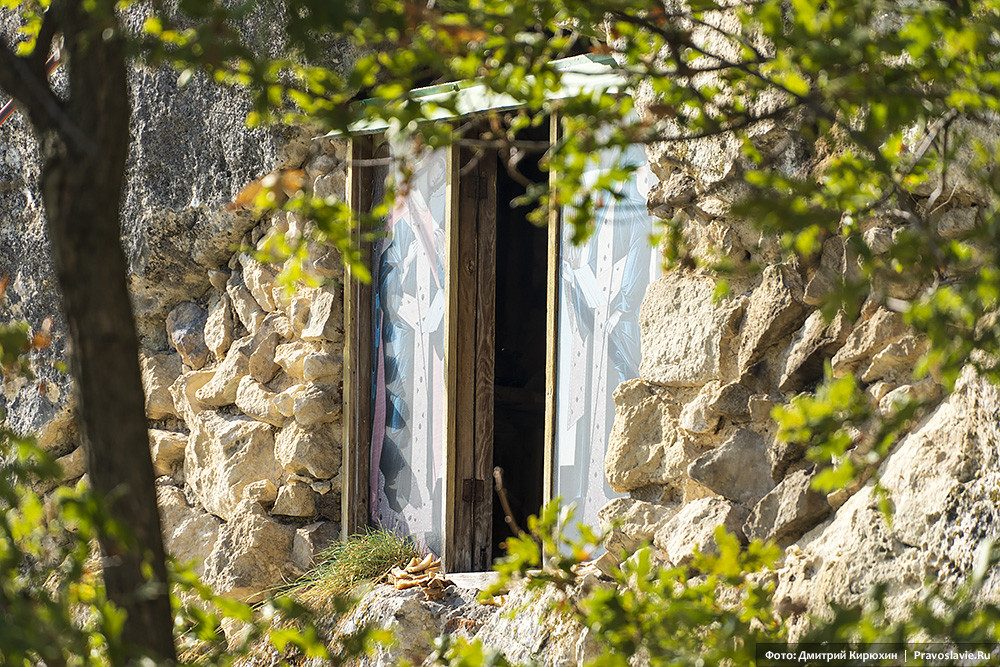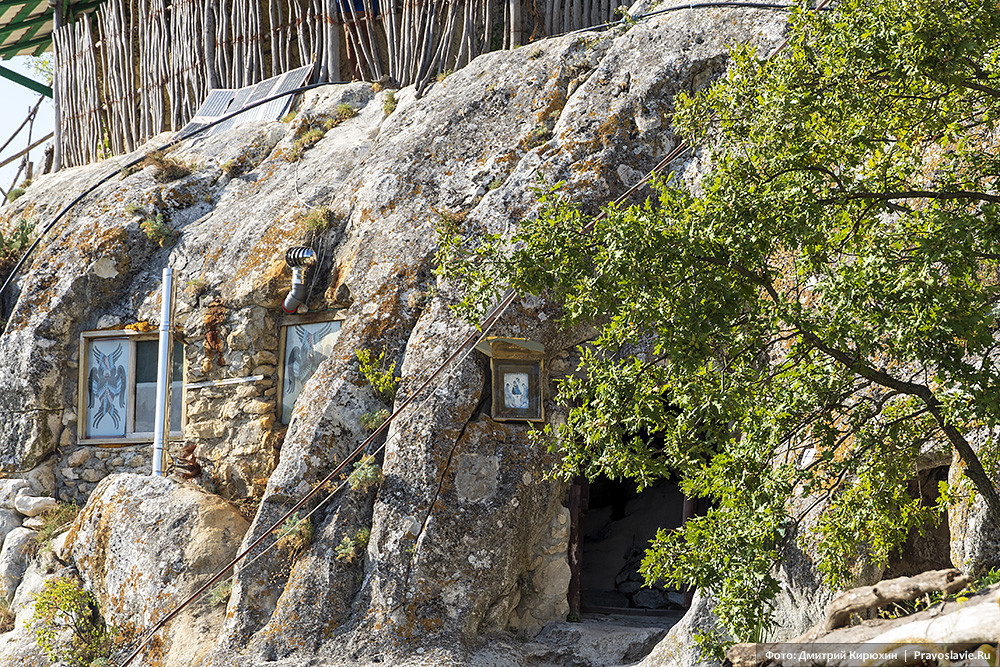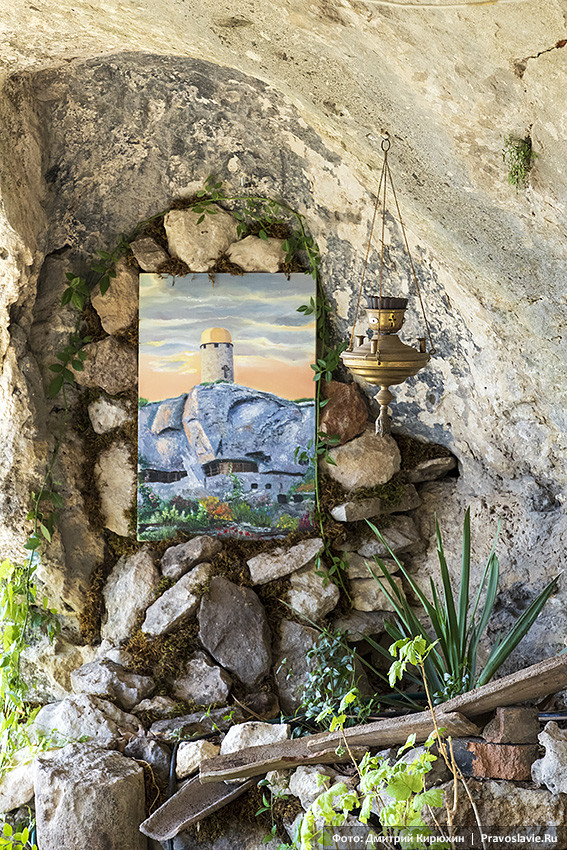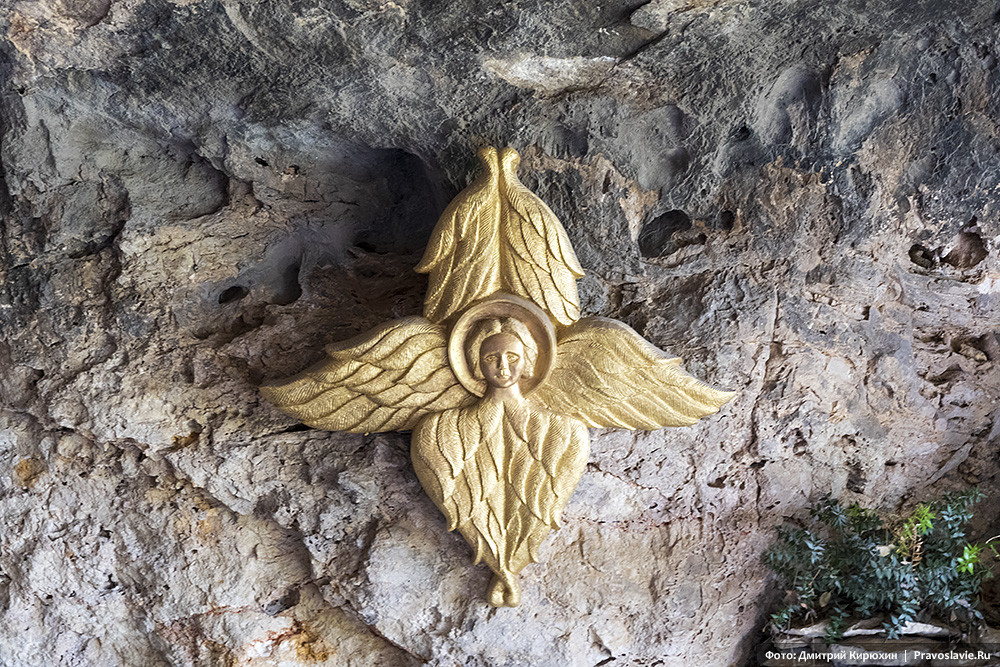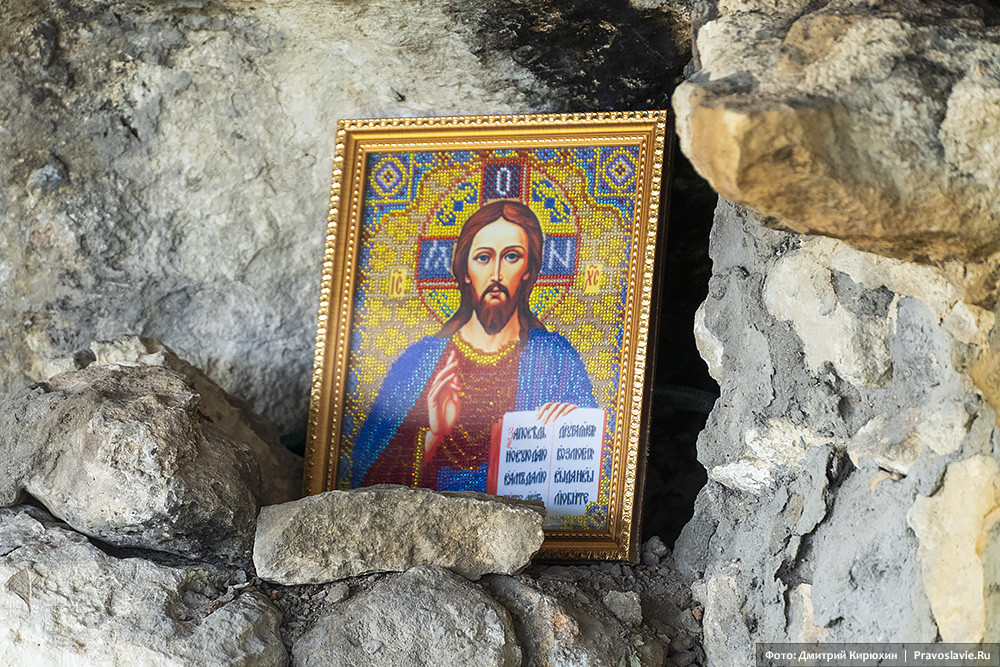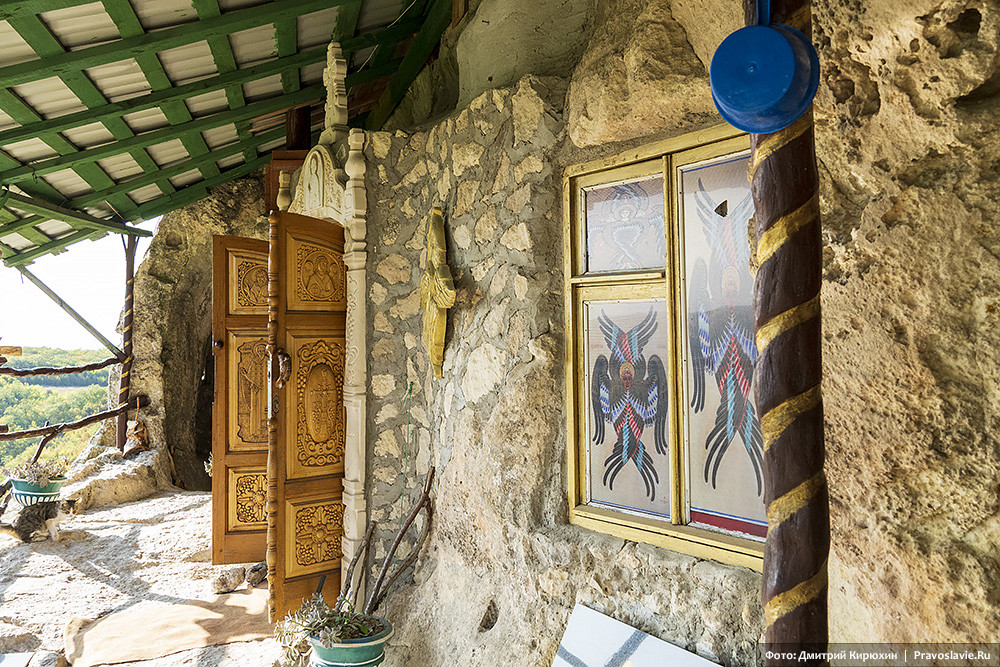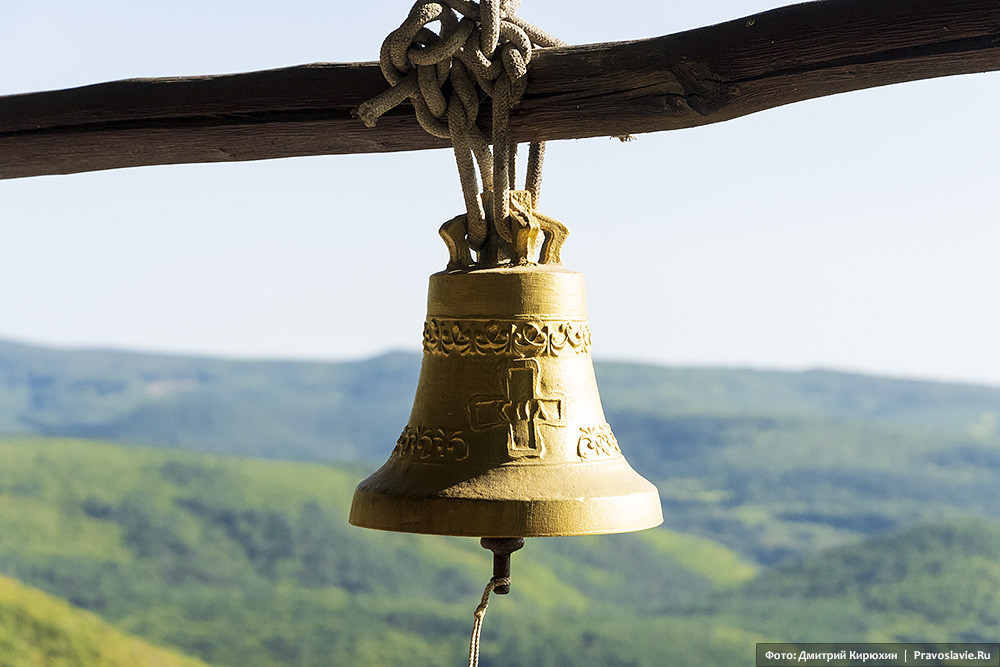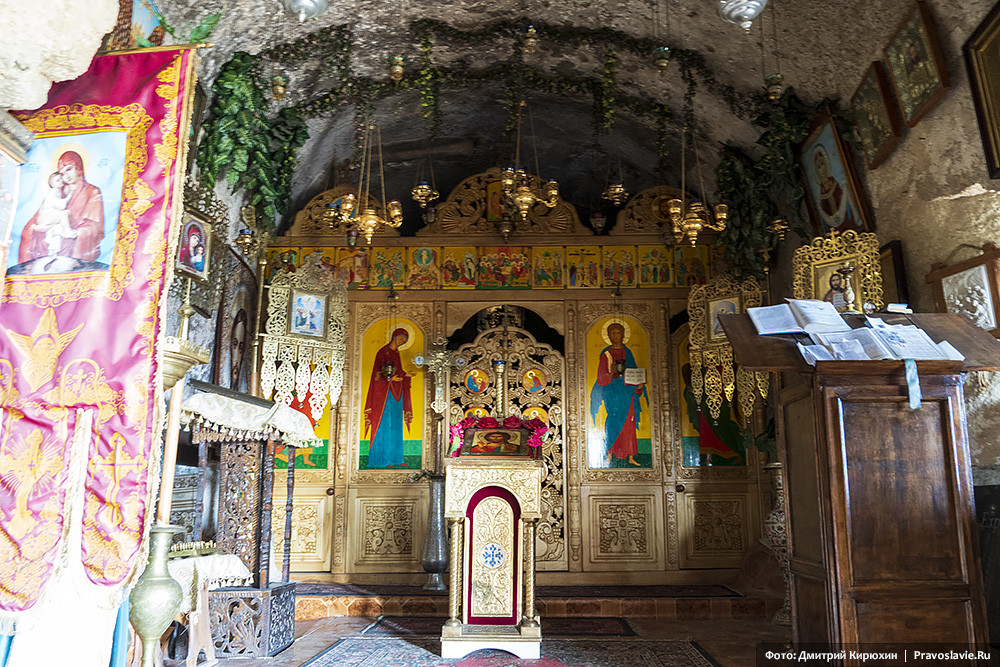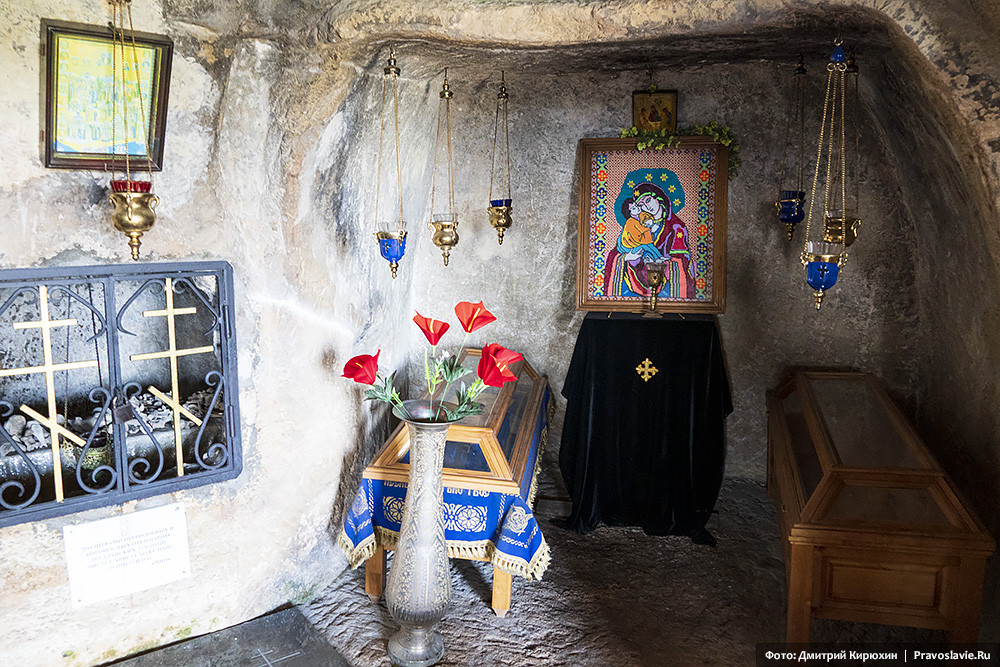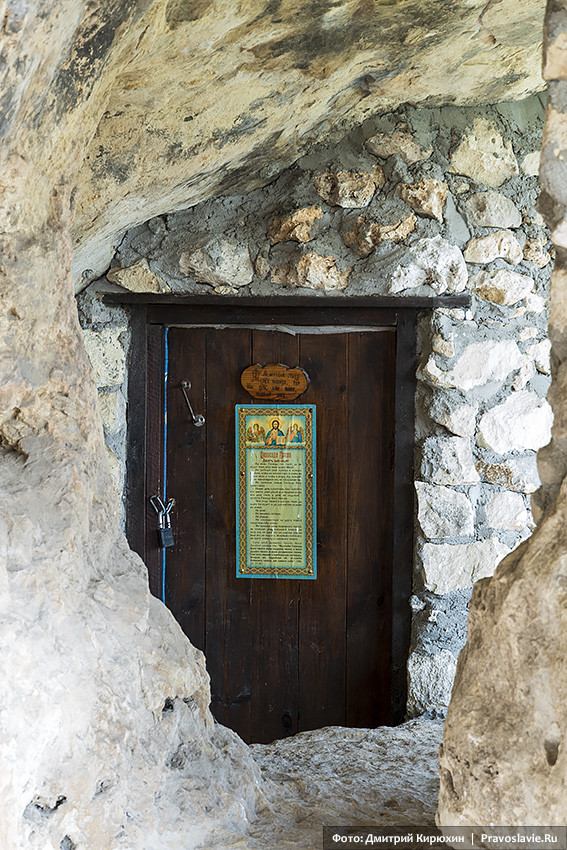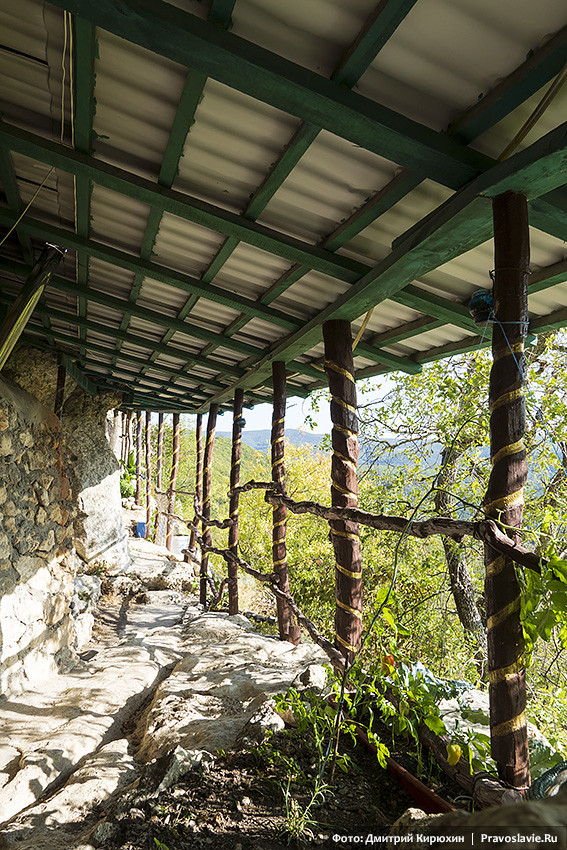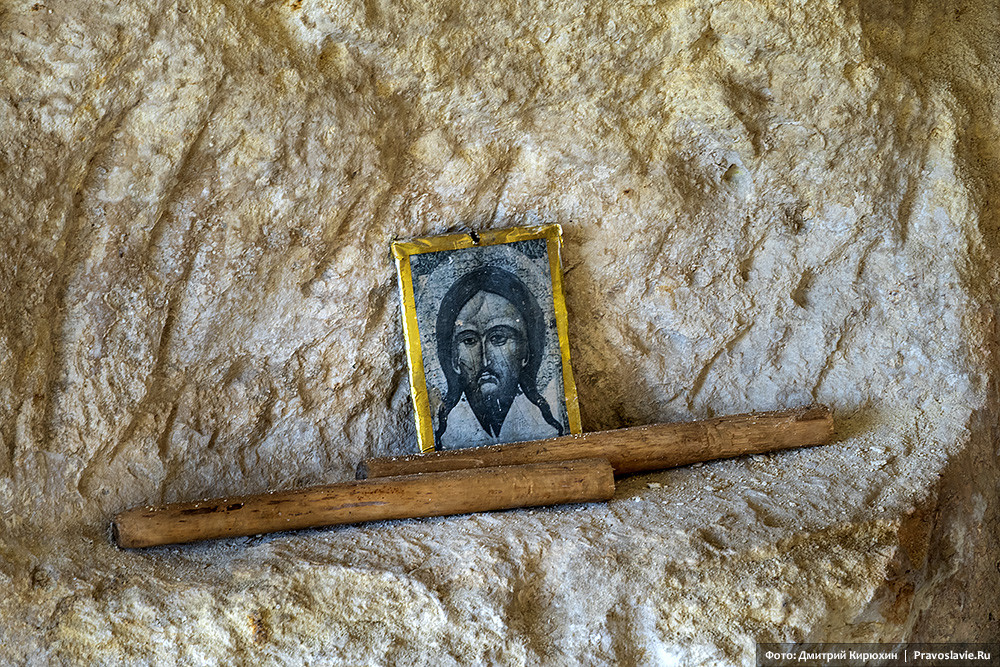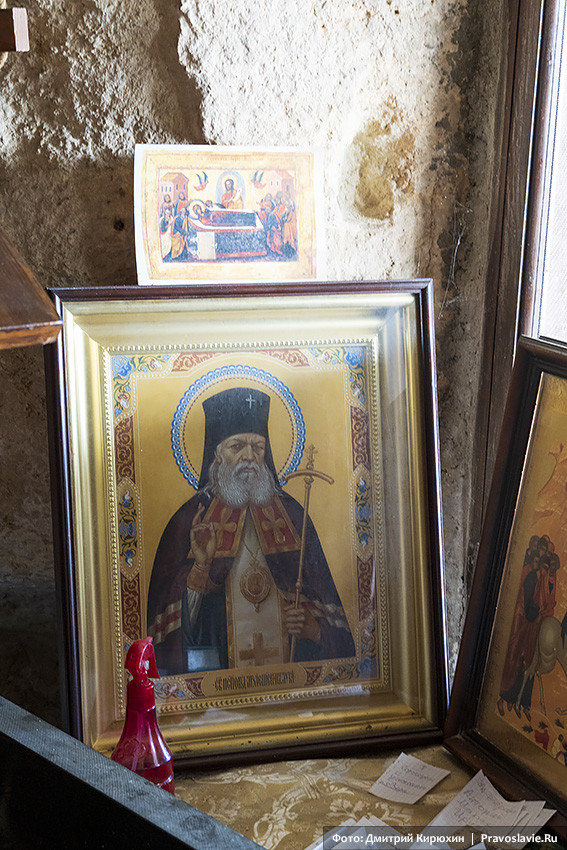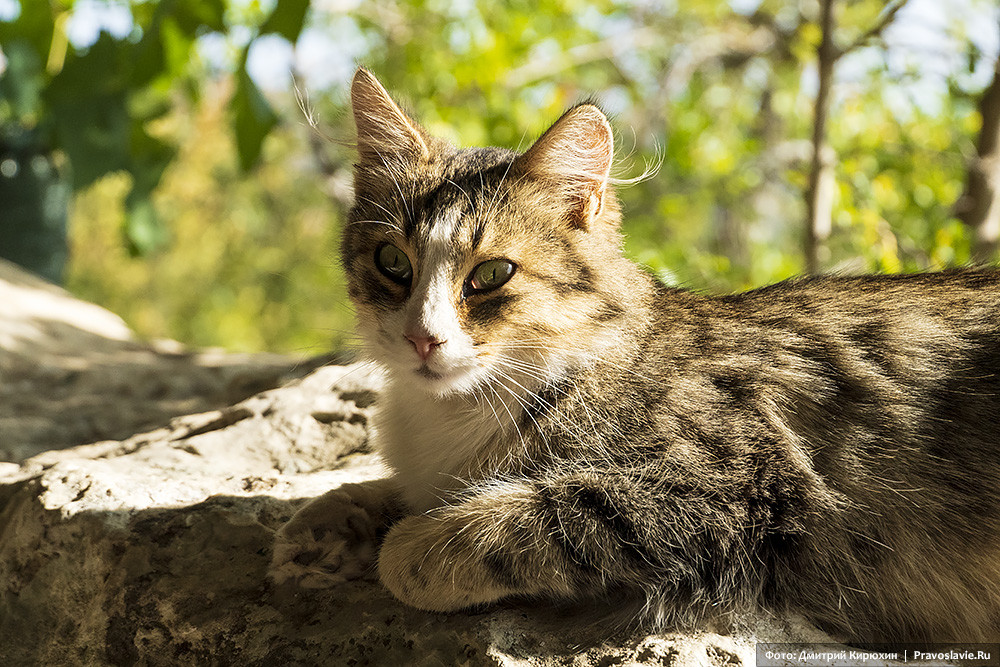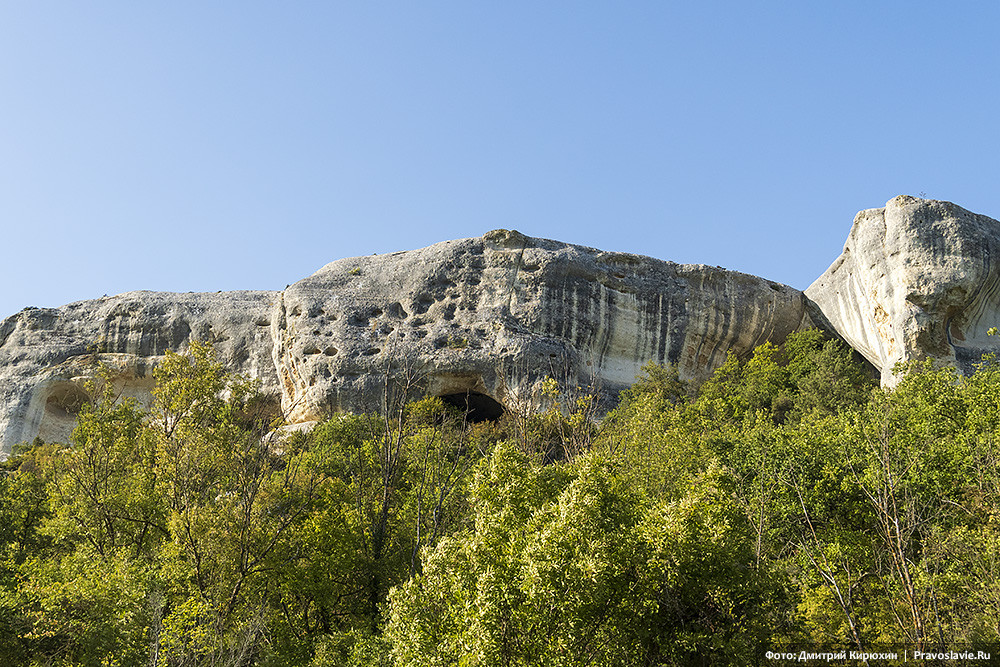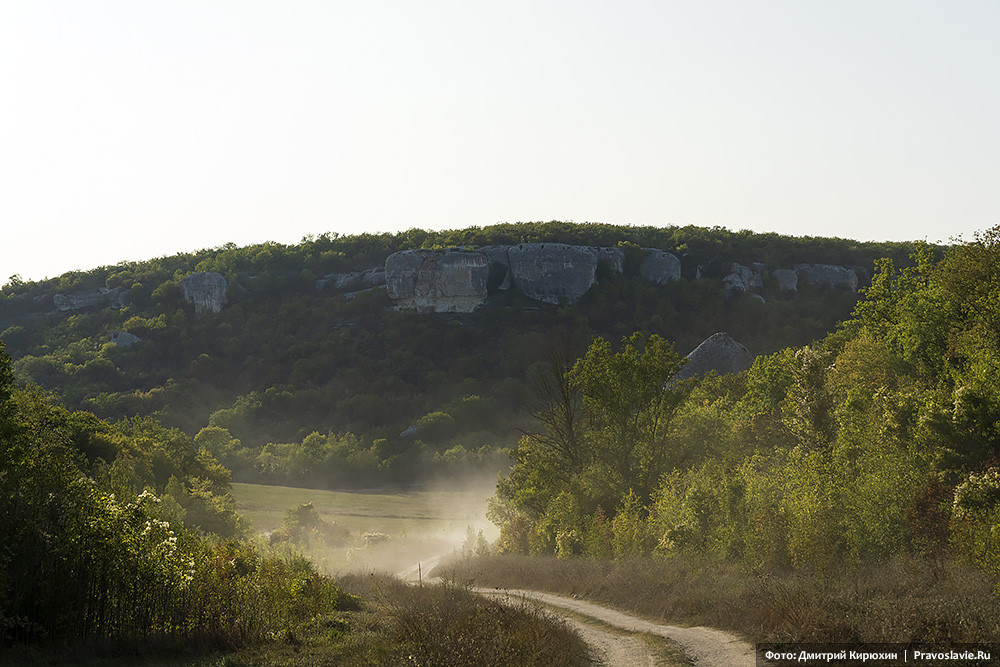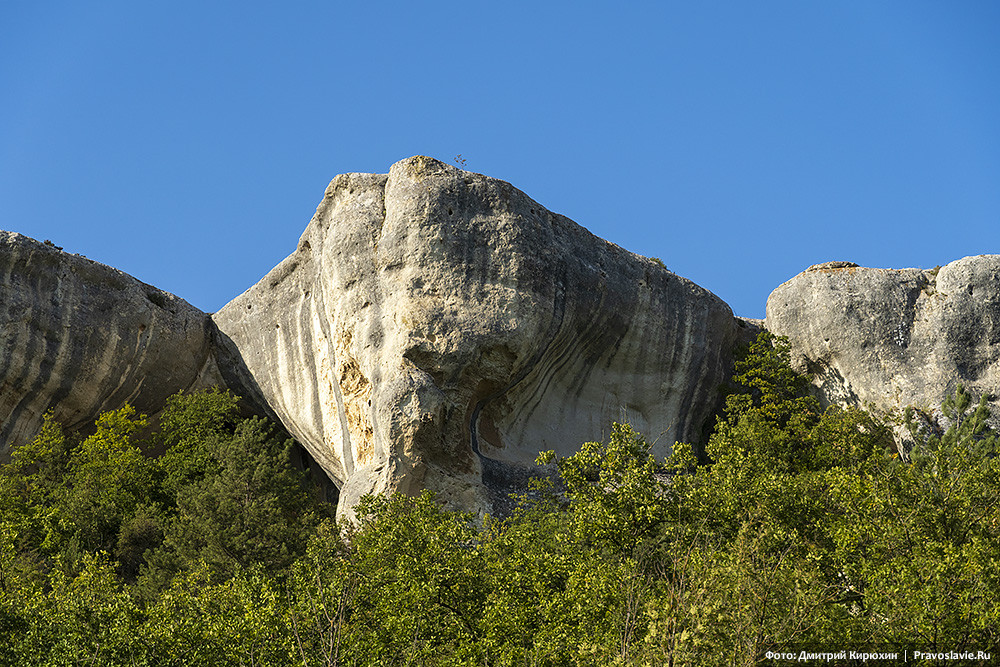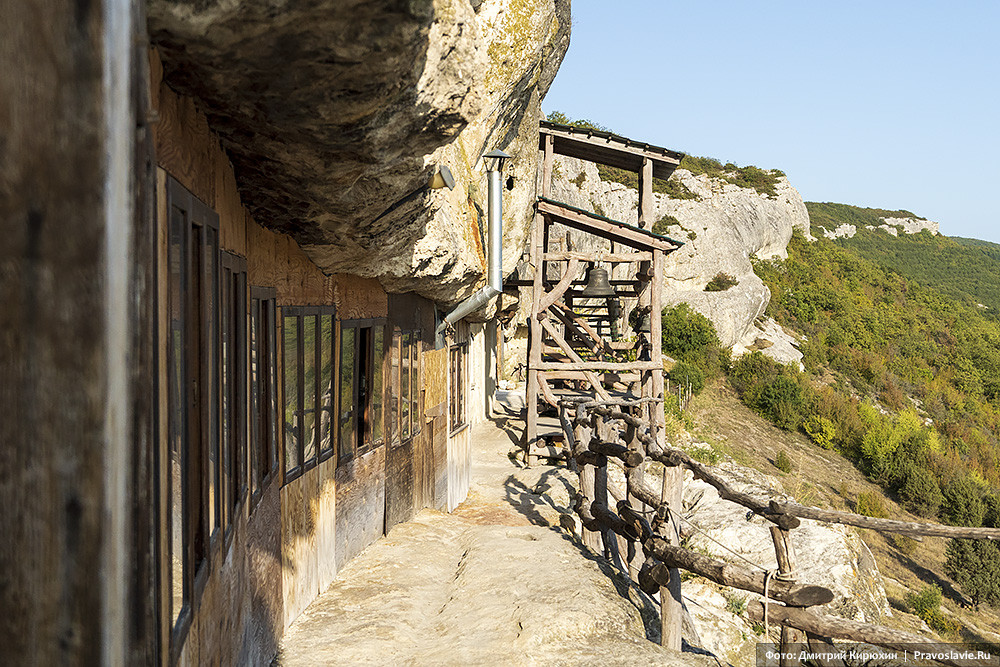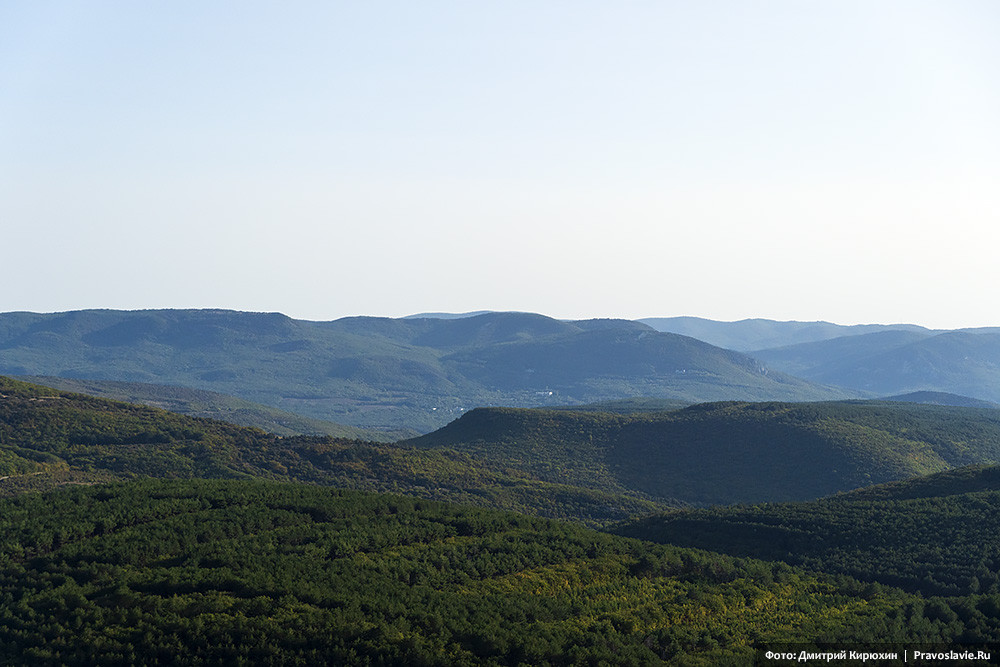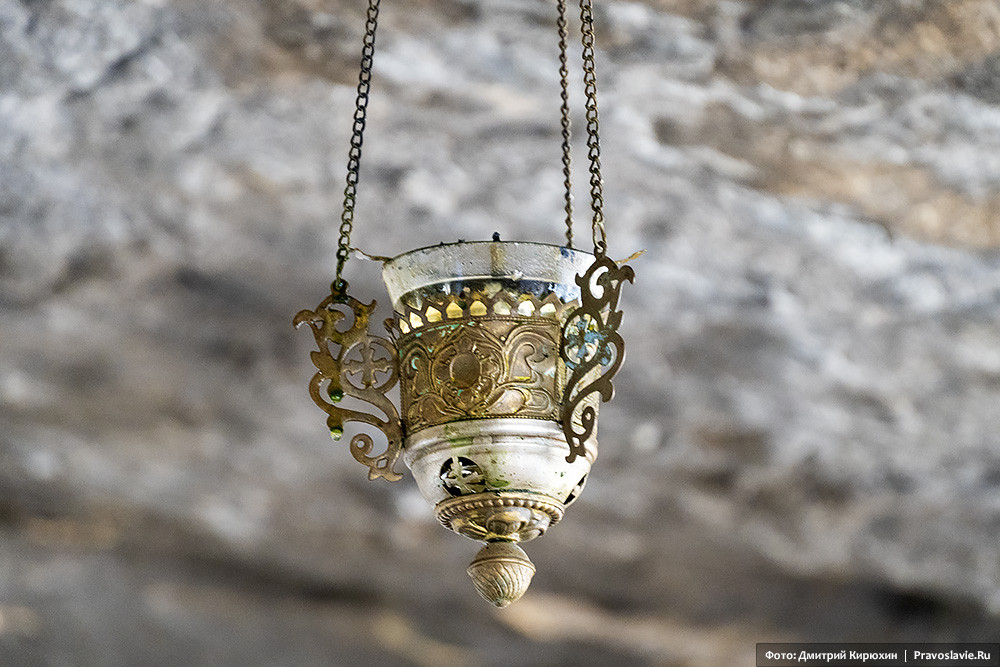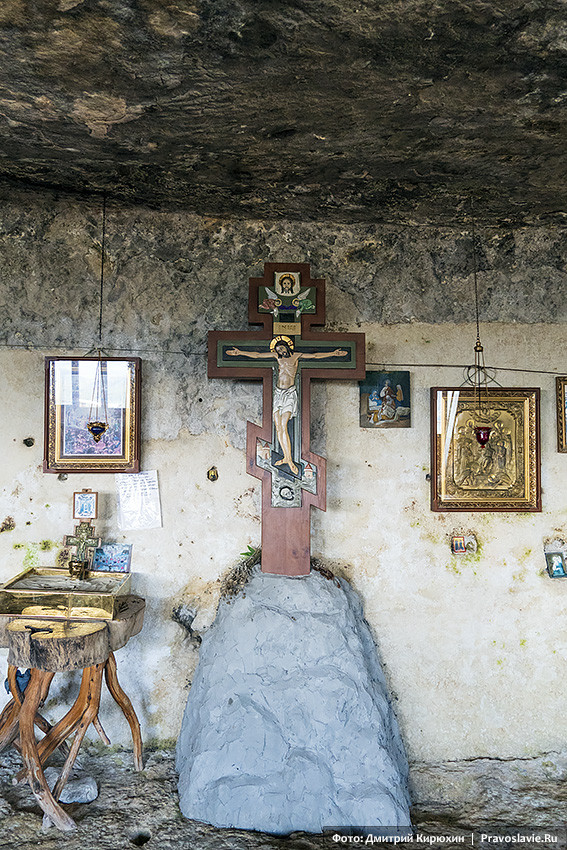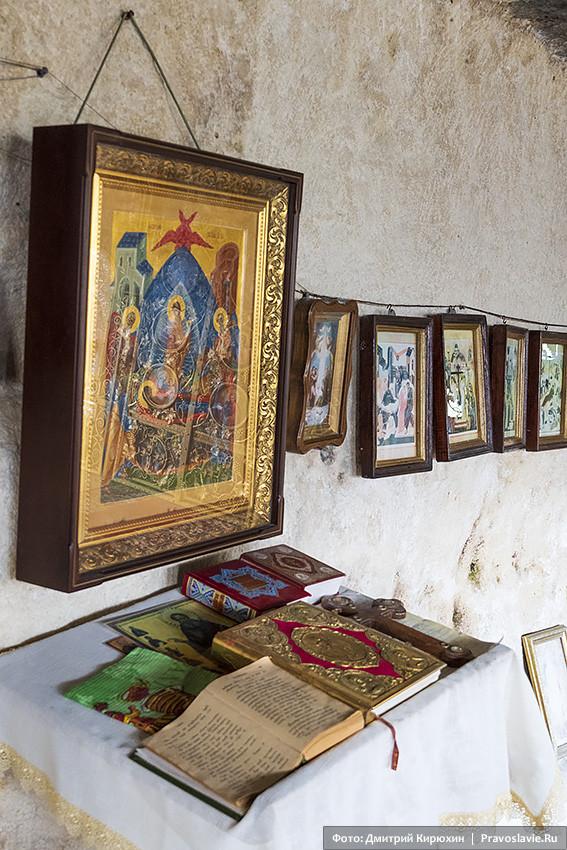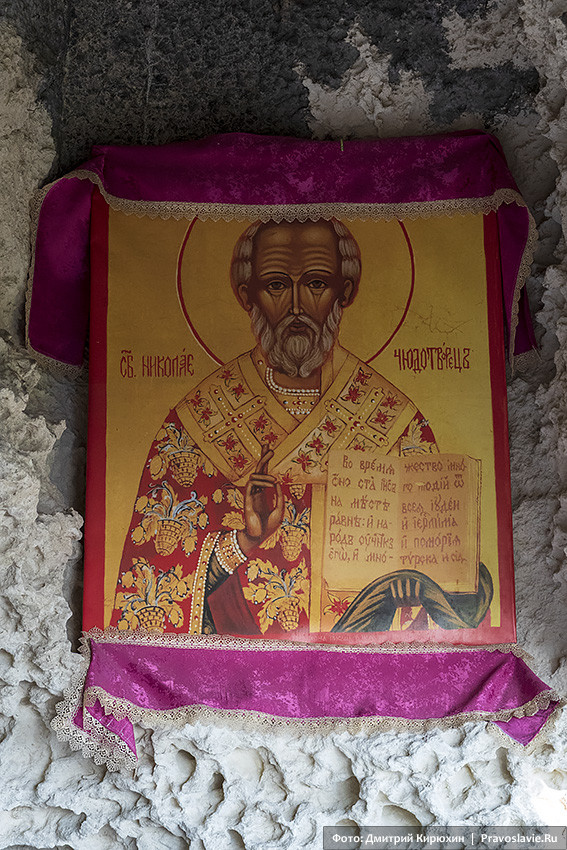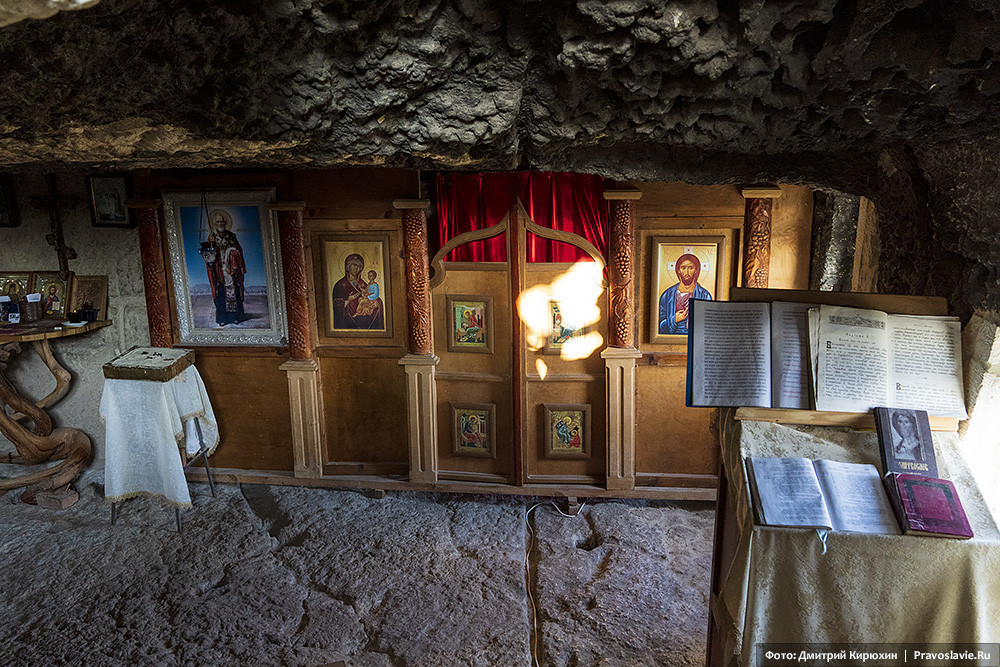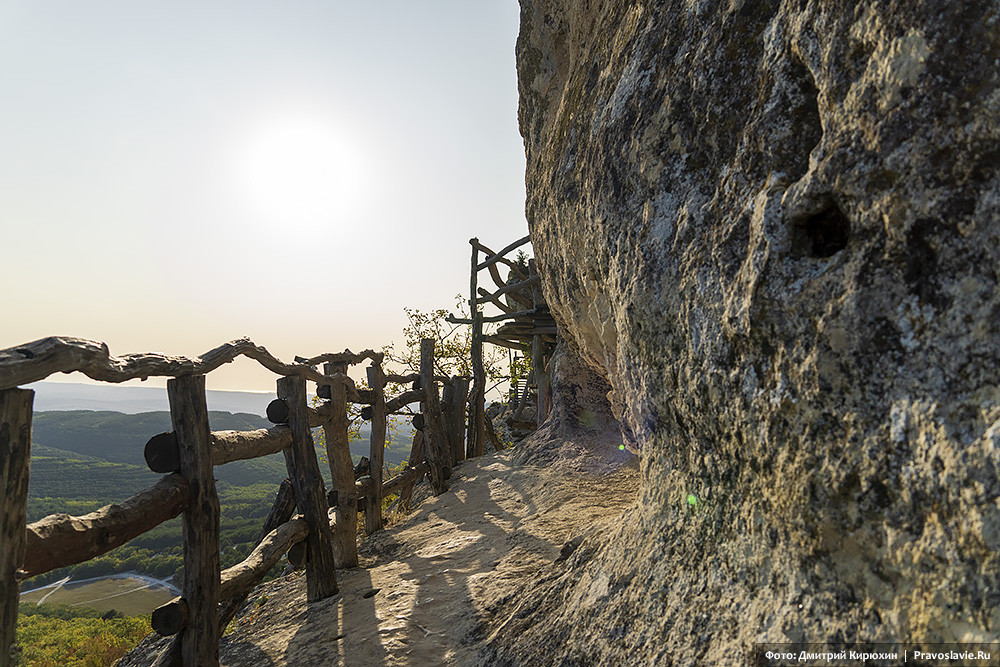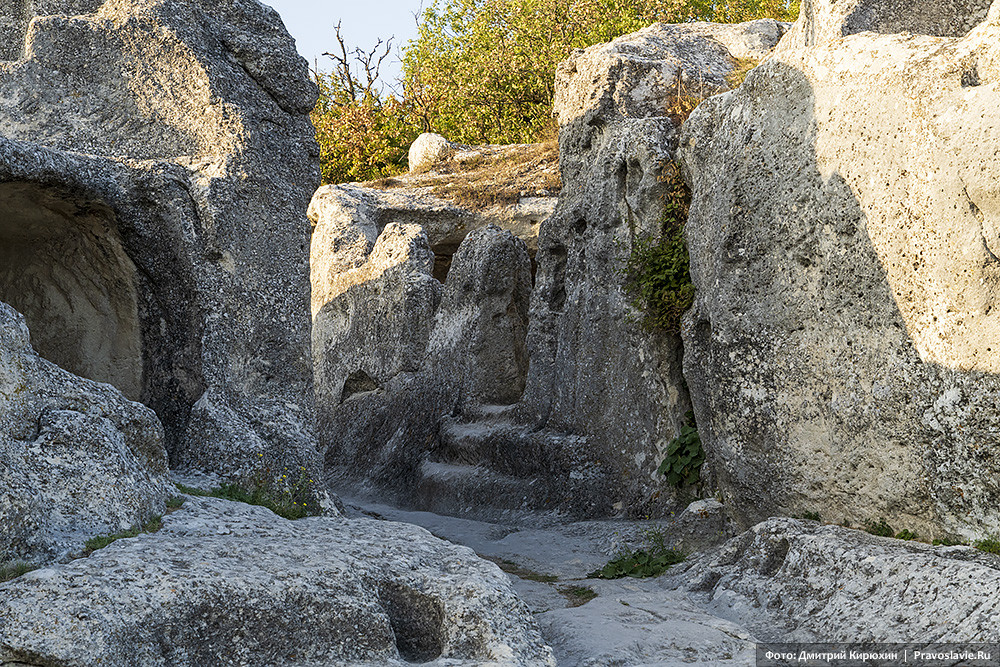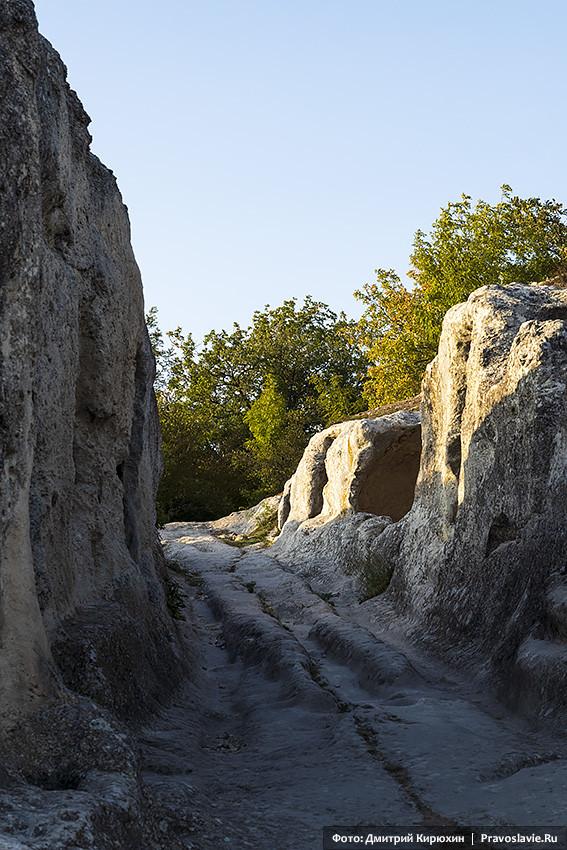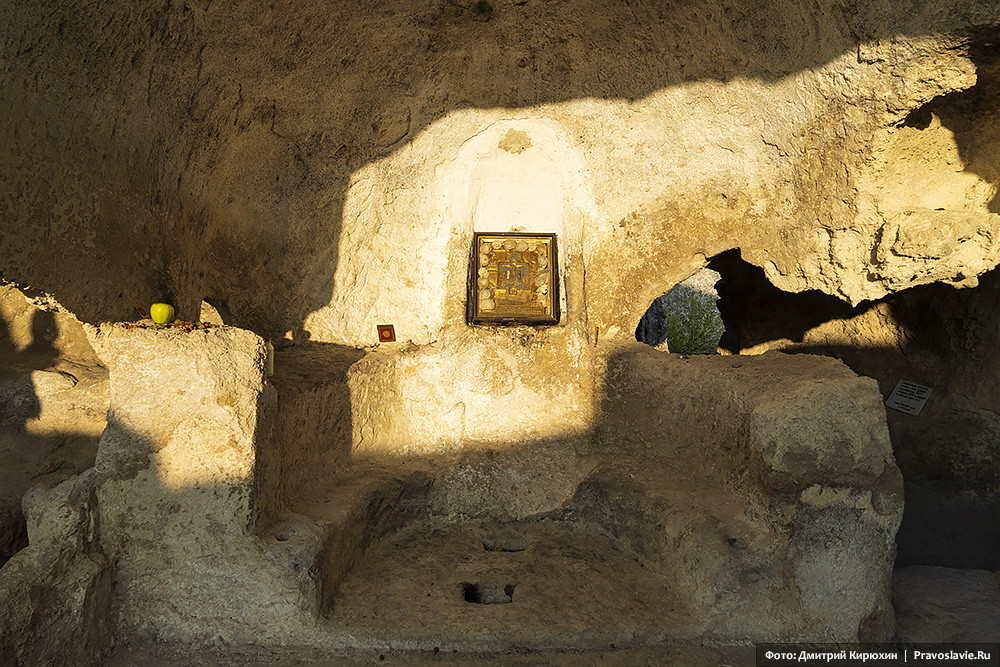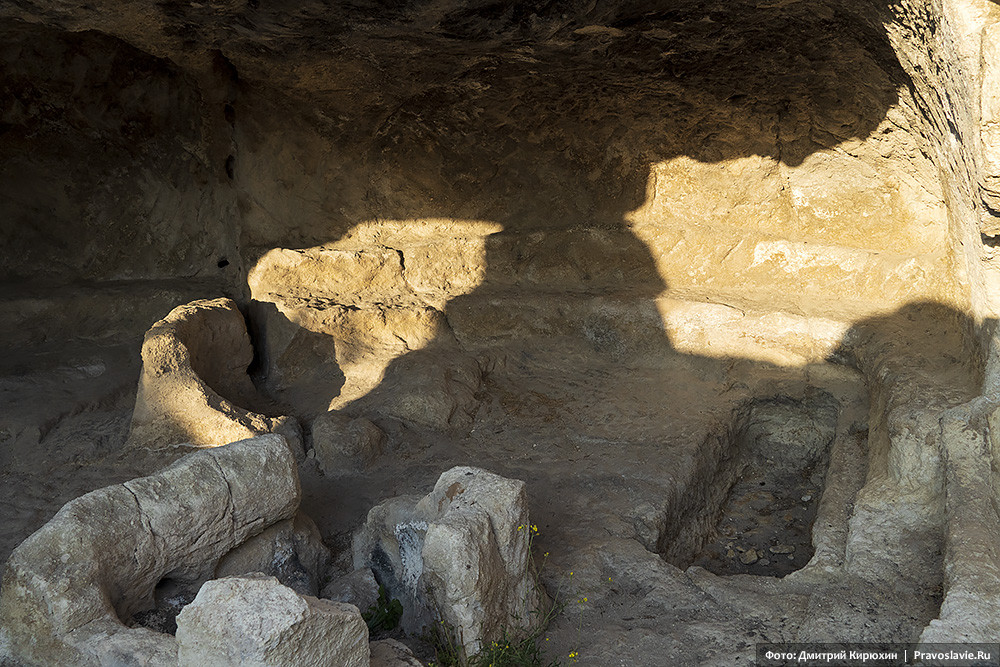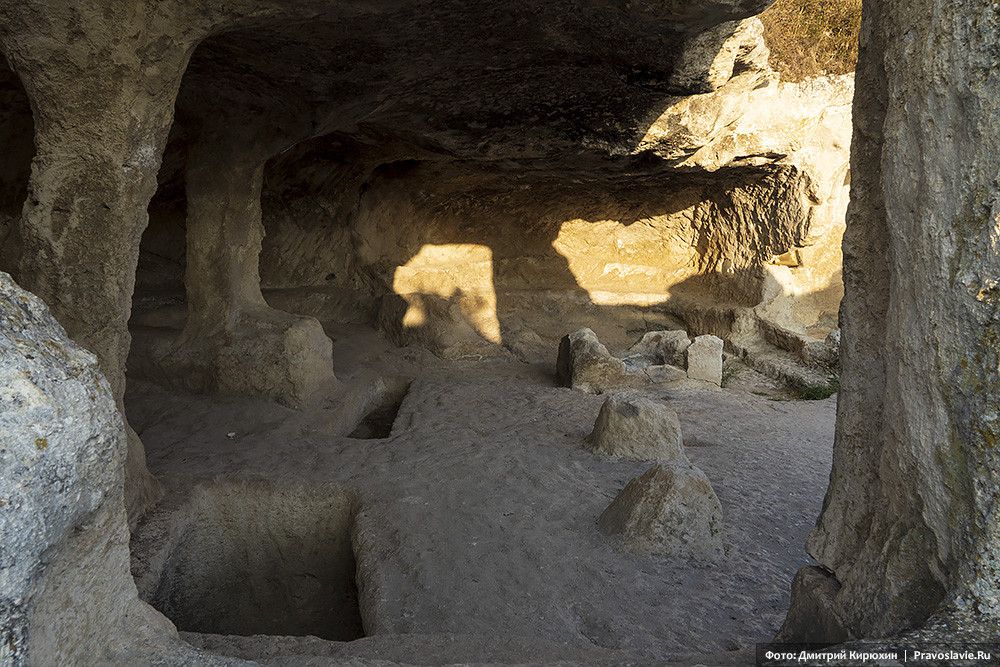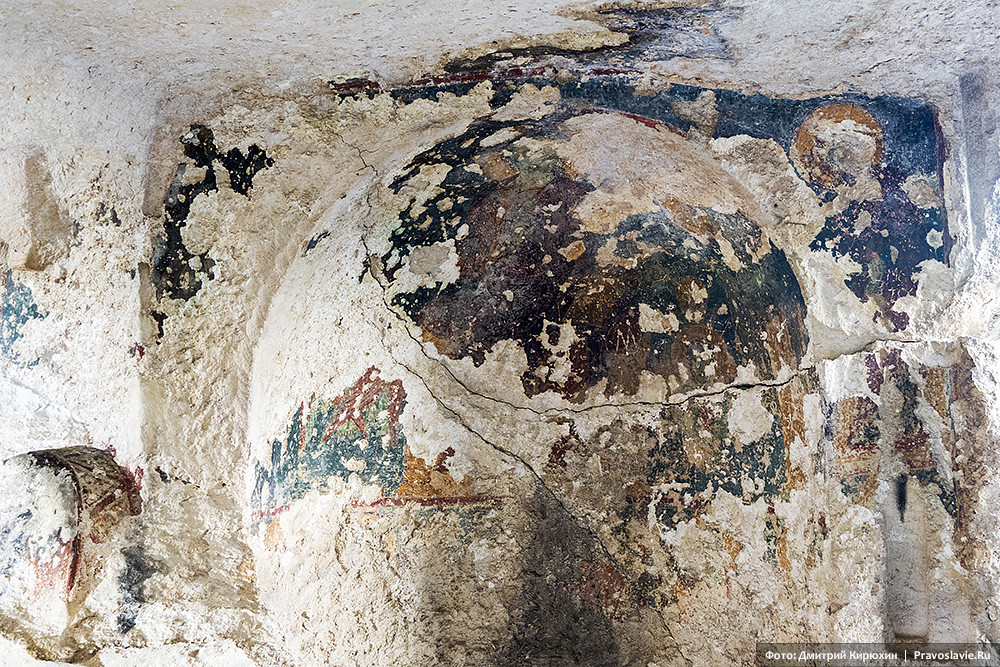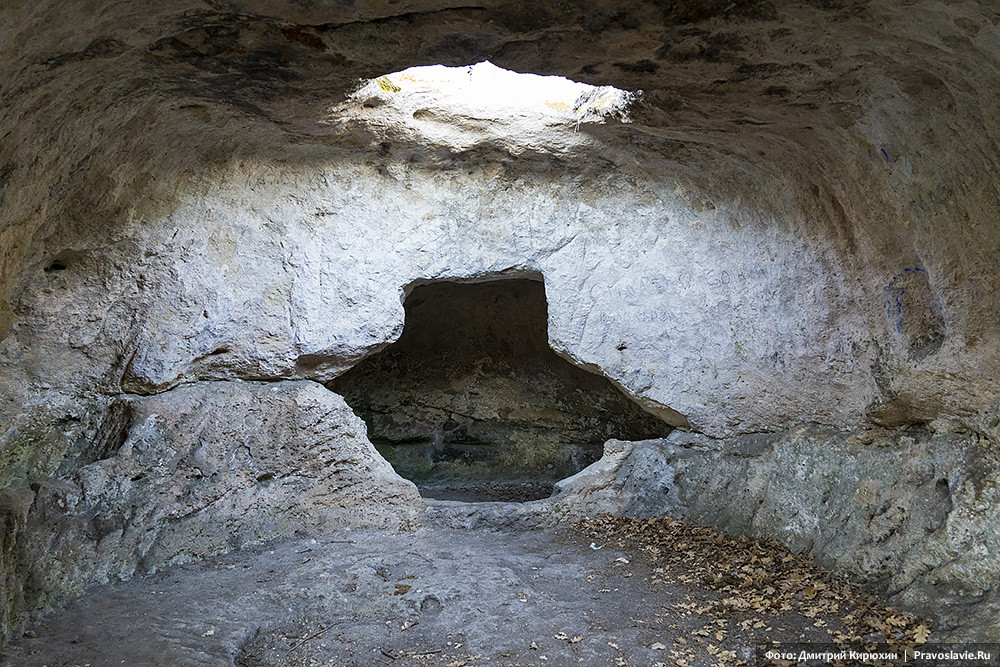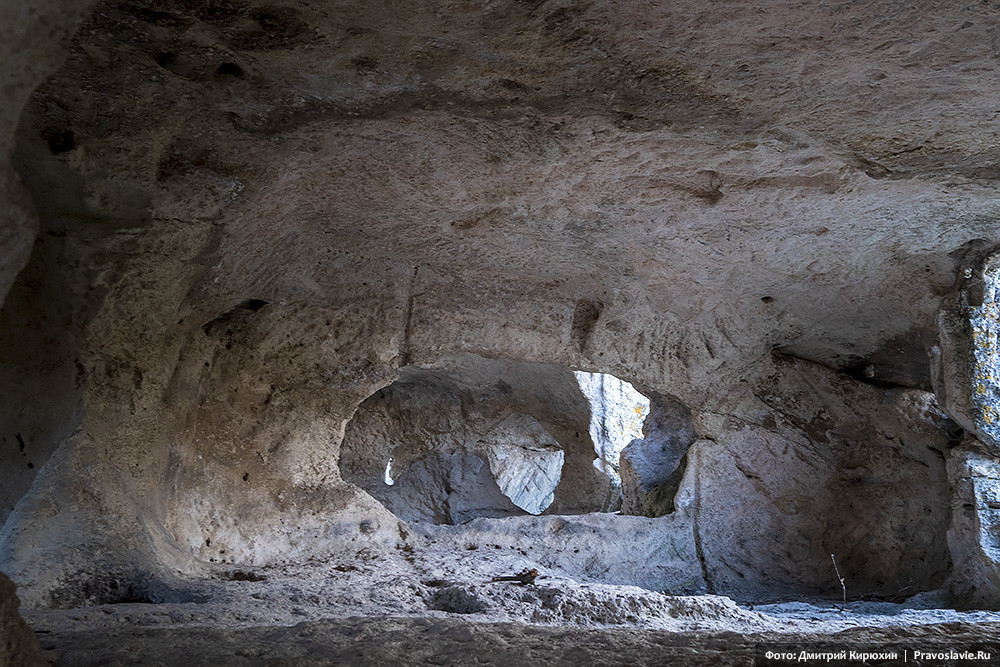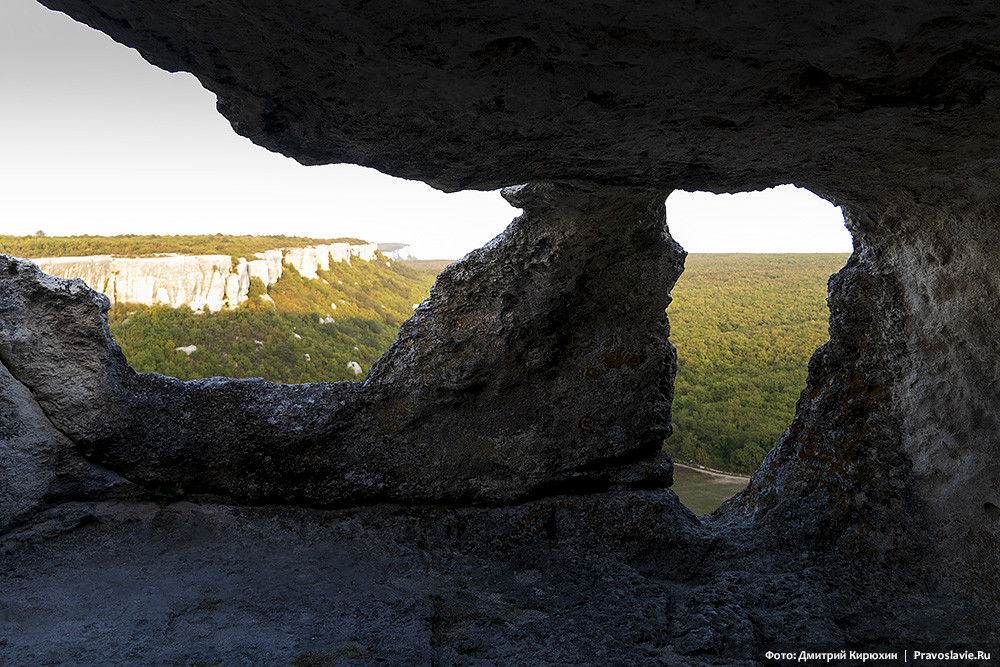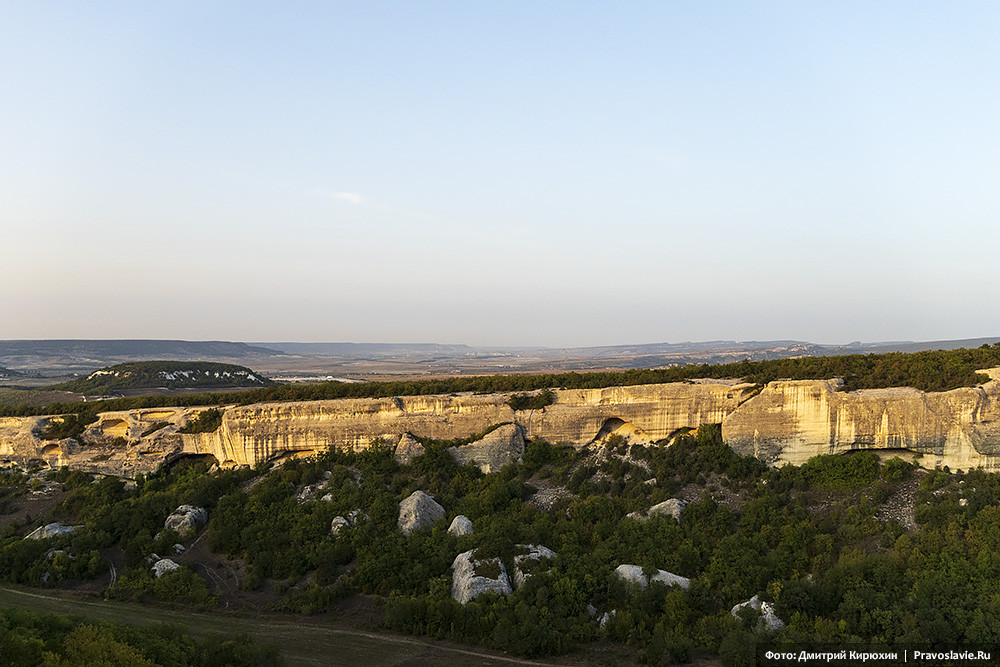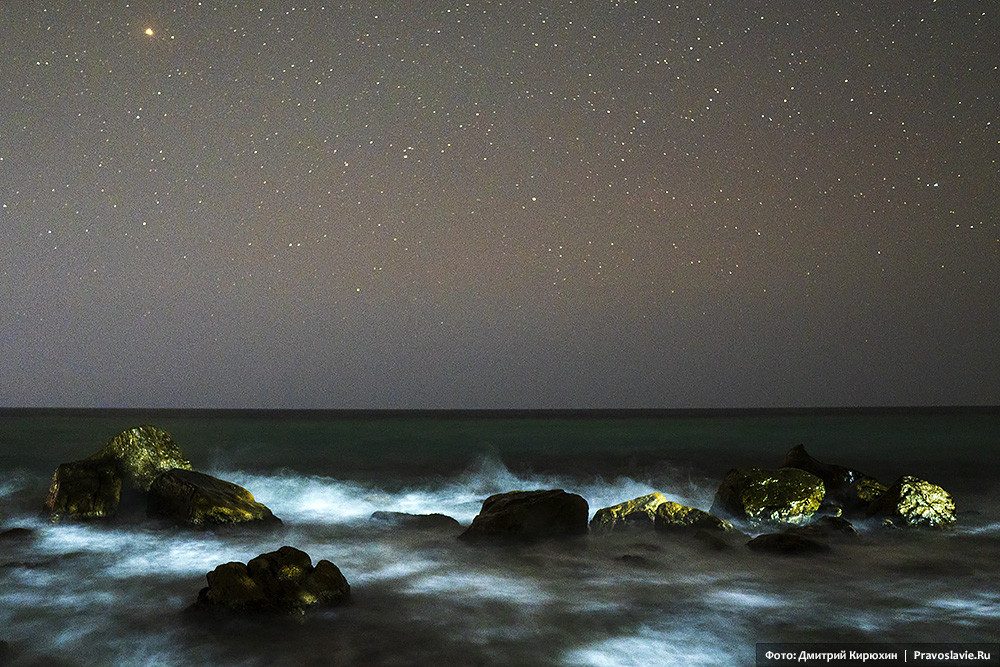Cave Monasteries of Crimea
PHOTO GALLERY
We present here a photo tour of the cave monasteries of Shuldan and Chelter-Marmara and the cave city of Eski-Kermen in Crimea.
The Shuldan Monastery of Christ the Savior is located near the modern village of Ternovka in Sevastopol. The name “Shuldan” means “resounding echo” or “inaccessible place.” It consists of two cave churches and twenty rooms for religious and economic purposes, located in two tiers.
The monastery was founded in the eighth century by monastic iconodule refugees from Byzantium during the period of the battle against the icons by emperors from the Isaurian Dynasty of Leo and Constantine Copronymus. The monks who lived in Shuldan worked in viticulture and winemaking.
The cave monastery of Chelter-Marmara is located on a cliff of Chelter-Kaya Mountain, not far from the Shuldan Monastery, a mile northwest of the village of Ternovka on the territory of the city of Sevastopol. It is an object of cultural heritage of the peoples of Russia of Federal significance.
Translated from Crimean Tatar, “Chelter” means “lattice” or “grid.” Marmara is the name of a medieval village at the foot of the mountain. There are more than fifty caves there located in four tiers. There are four churches, cells, a trapeza, and household and storage rooms. In antiquity, they were connected by wooden stairs, balconies, and galleries that resembled openwork lattice.
Not far from these monasteries is the medieval city-fortress of Eski-Kermen. Translated from Crimean Tatar, the name means “old fortress.” The city is built on a table-like mountain plateau, bounded by cliffs up to 100 feet deep. It is one of the most visited cave cities of Crimea and is part of the Bakhchisaray Historical and Cultural Reserve. Several cave churches existed in this city, carved into the rocks in the twelfth to thirteenth centuries, with a multitude of frescoes.
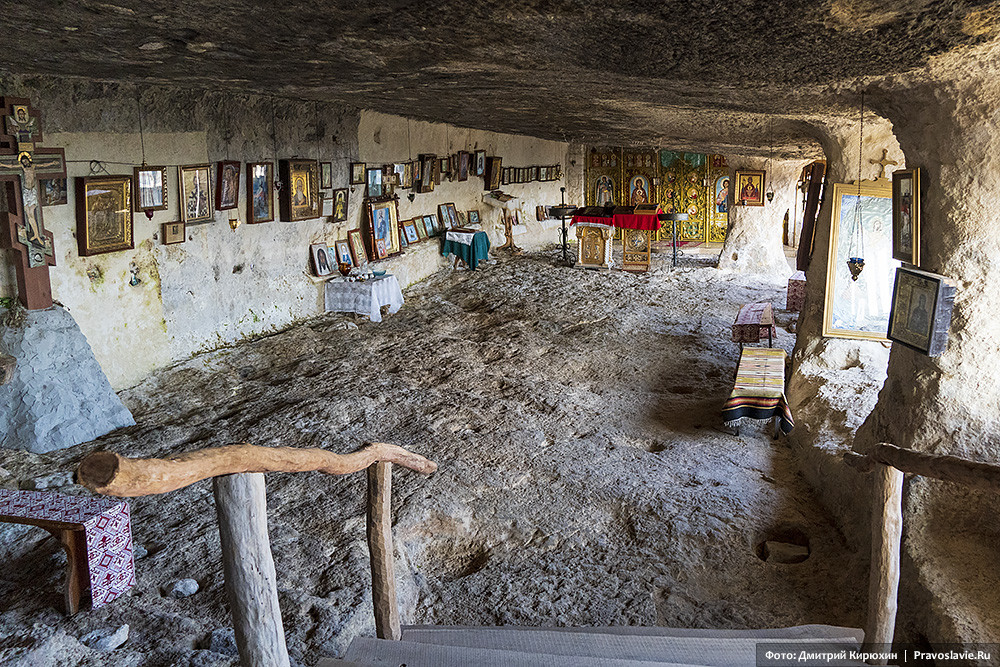
Church of St. Sabbas the Sanctified in the Chelter-Marmara monastery
Photo: Dmitry Kiryukhin / Pravoslavie.ru
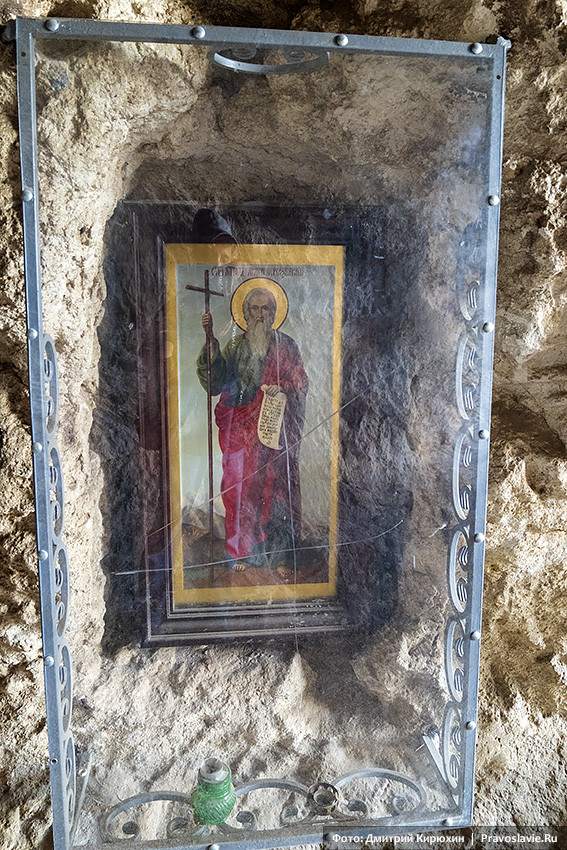
Gift of the St. Andrew the First-Called Fund to the Monastery of St. Sabbas the Sanctified in Chelter–Marmara in memory of the bringing of the relics of St. Andrew from the Epiphany Cathedral in Moscow to the Crimea on July 30-August 30, 2016.
Photo: Dmitry Kiryukhin / Pravoslavie.ru





